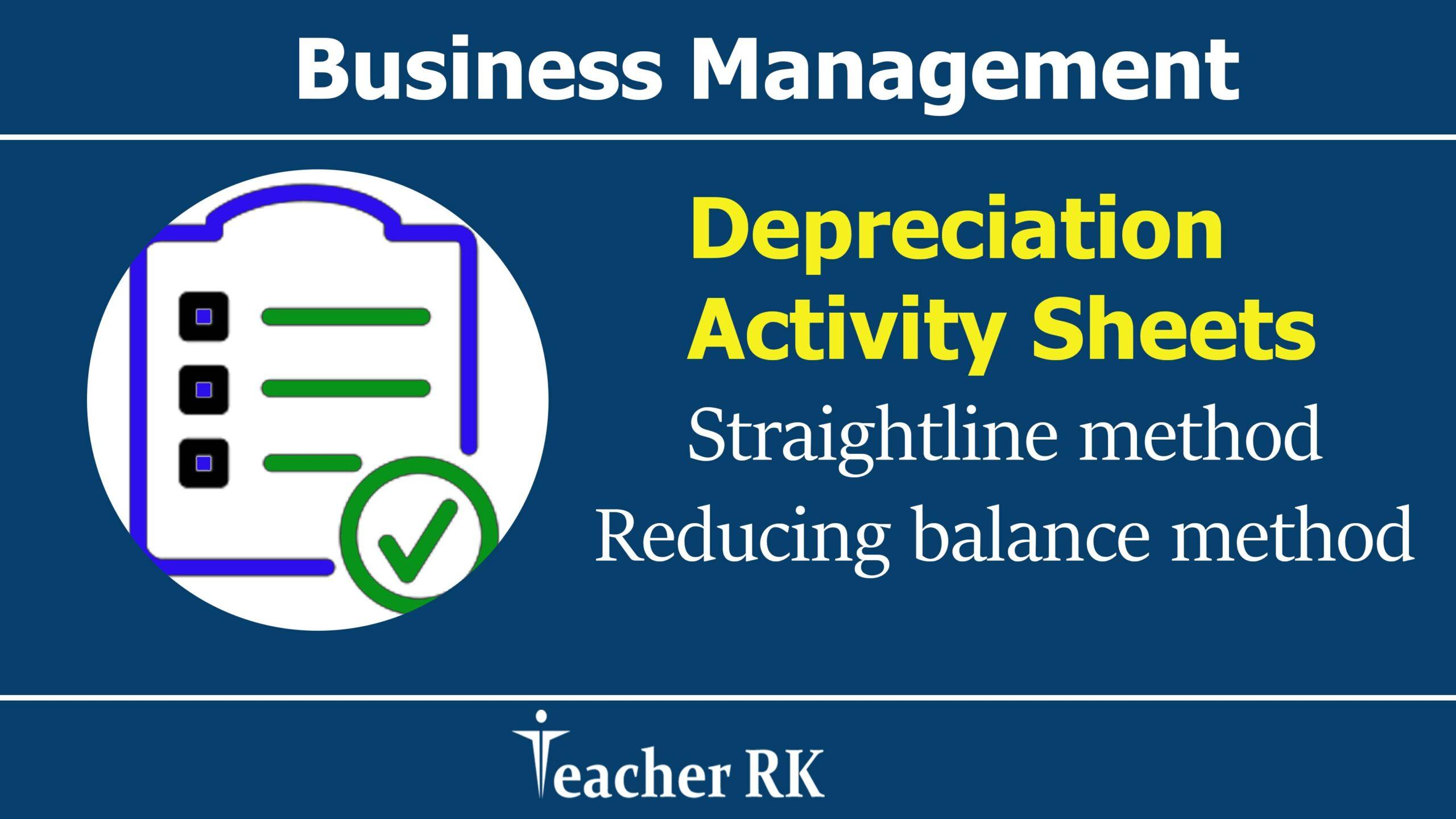Depreciation is the process of allocating the cost of a tangible asset over its useful life. Assets that are subject to depreciation include buildings, equipment, furniture, and vehicles. In other words, depreciation is an accounting process that measures the decline in value of assets over time. It’s a way to allocate the cost of an asset to each year it was used.
There are two methods of depreciation:
- Straight-line method of depreciation
- Reducing balance method of depreciation
Straight-line method of depreciation
Straight-line method of depreciation is a method in which the asset is depreciated evenly over its useful life. Straight line depreciation is the most common and straightforward type of depreciation. It’s calculated by dividing the total cost of an asset, less its residual value, by its useful life.
Straight-line method of depreciation example
Dee Ltd., purchases a machine for $50 000 with an estimated residual value of $ 10 000 and a useful life of 5 years.
The amount of depreciation is calculated as follows:
Original cost of the asset: $ 50 000
Cost of the asset – residual value: $ 50 000 – $ 10 000 = $ 40 000
Useful life of the asset: 5 years
So, the annual amount of depreciation is $ 50 000 – $ 10 000 / 5 years = $ 8 000.
Reducing (declining) balance method of depreciation
The reducing balance method of depreciation reduces the depreciation expense for an asset with each accounting period. In other words, more depreciation is charged against the cost of an asset at the beginning of its lifespan, and less is taken at its end
Reducing balance method of depreciation example
Dee Ltd., purchases a motor car $ 10 000. The company decided to depreciate at the rate of 10 per annum. By using reducing balance method, the first 2 years of depreciation calculations would look like this.
Year 1: $ 10 000 X 10 % = $ 1000
Depreciation for the year 1 : $ 1000
Net book value at the end of year 1 $ 9000 ( $ 10 000 – $ 1 000)
Year 2: $ 9 000 X 10 % = $ 900
Depreciation for the year 2: $ 900
Net book value at the end of year 2: $ 8 100 ( $ 9 000 – $ 900)
The main difference between the reducing balance and straight-line methods of will lie in the fact that while with the first, depreciation is calculated as a percentage of an asset’s book value, with the latter method the annual amount of depreciation remains same over its useful life.
Worksheet 1: Moto Tech (MT)
Moto Tech (MT) manufactures and sells industrial building construction related machines and equipment. Due to its brand and service, MT leads the industry.
On 1 January 2019, MT purchased a new machine for its factory. The following additional information is available:
- The cost of machinery $ 50 000
- The machinery has a useful life of 5 years
- Residual value $ 10 000
- MT’s practice is to depreciate all fixed assets at the rate of 20 percent per annum.
Questions:
- Identify two causes of depreciation [ 2 marks]
- Calculate the net book value of the machine at 31 December 2021 using straight line method of depreciation (show all your working) [ 3 marks]
- Calculate the net book value of the machine at 31 December 2021 using reducing balance method of depreciation (show all your working) [ 3 marks]
- Outline two differences between straight line method and reducing balance method [ 4 marks]
- Explain the impact of not-providing depreciation on fixed assets on financial statement [ 2 marks]

